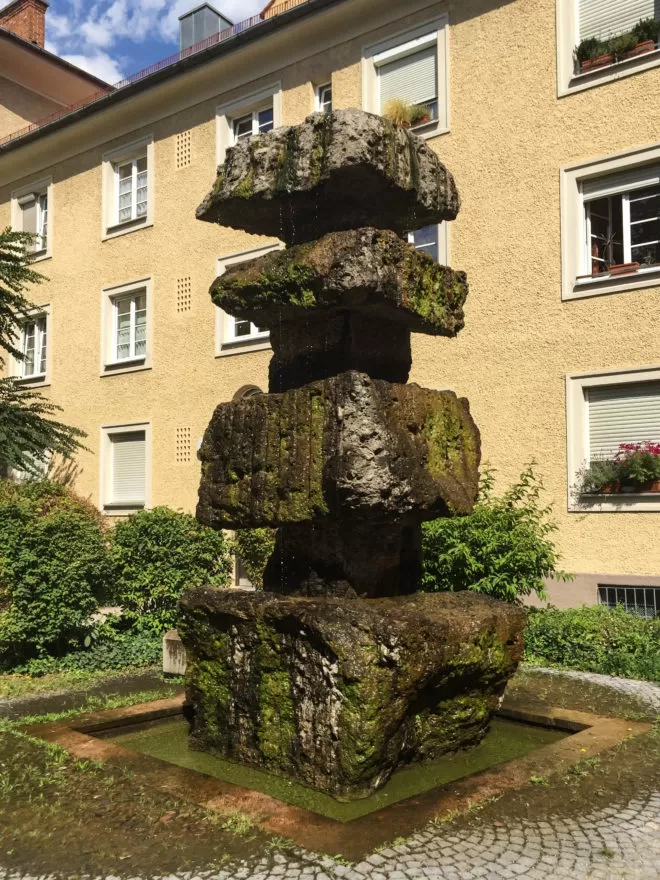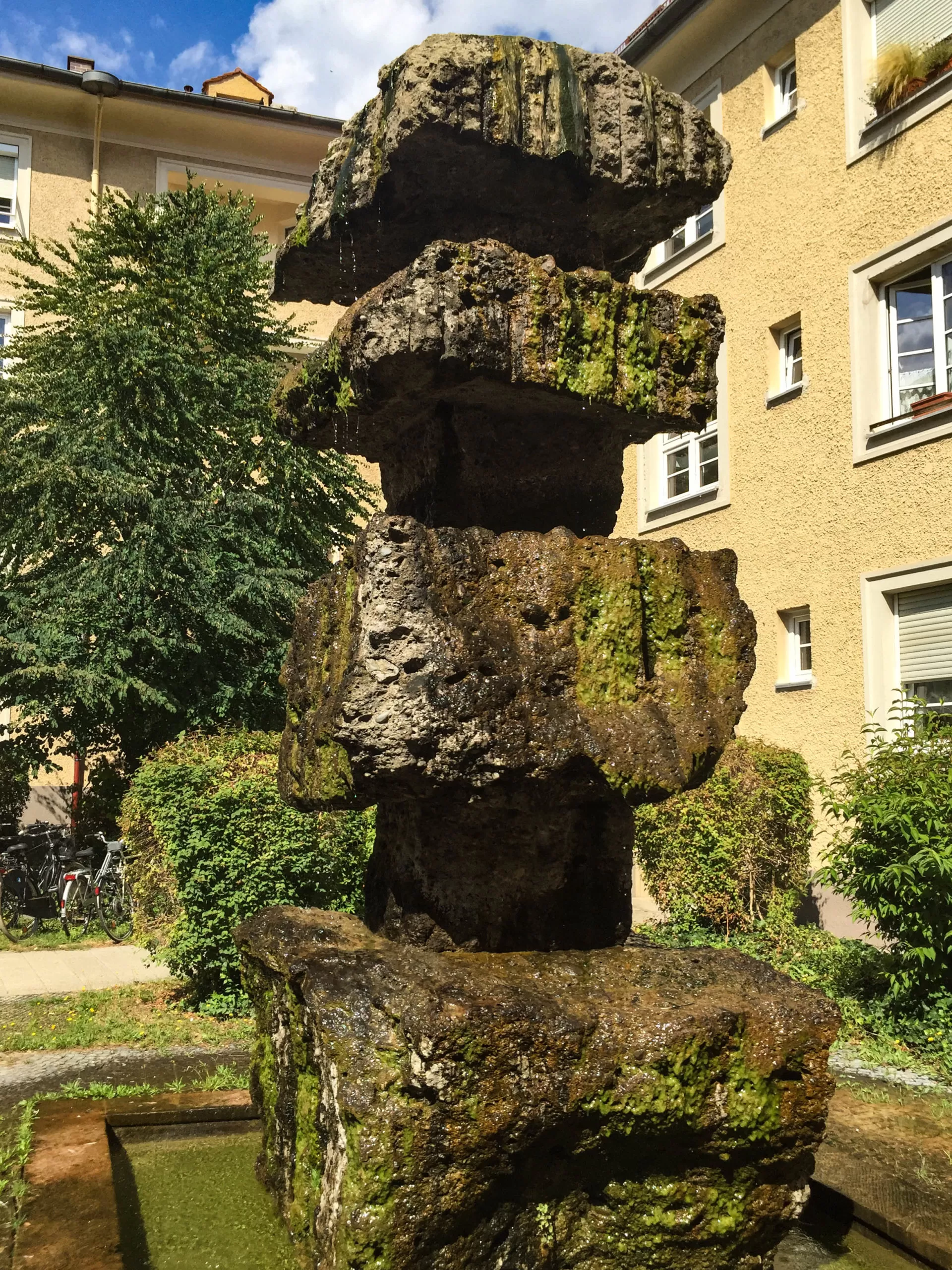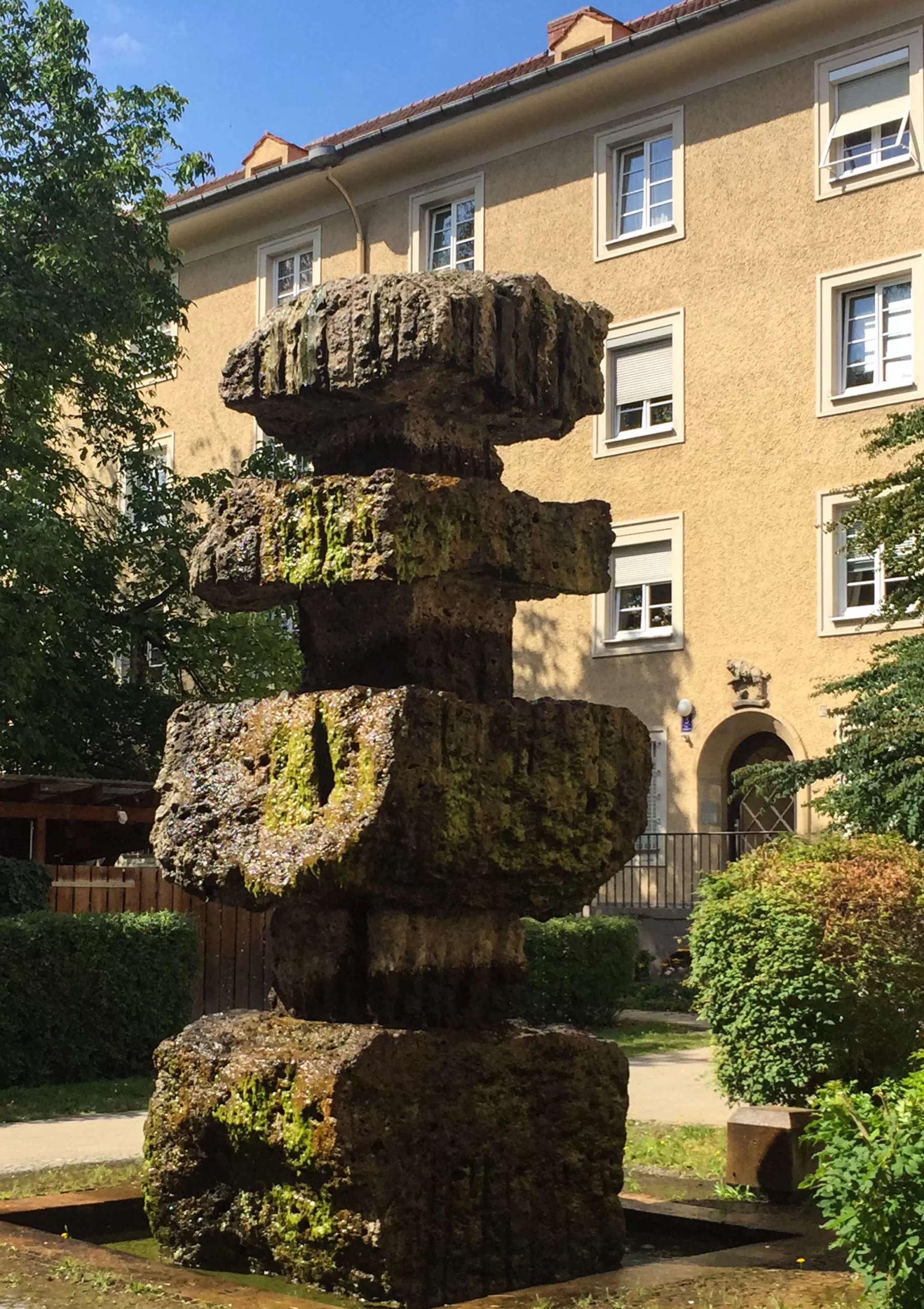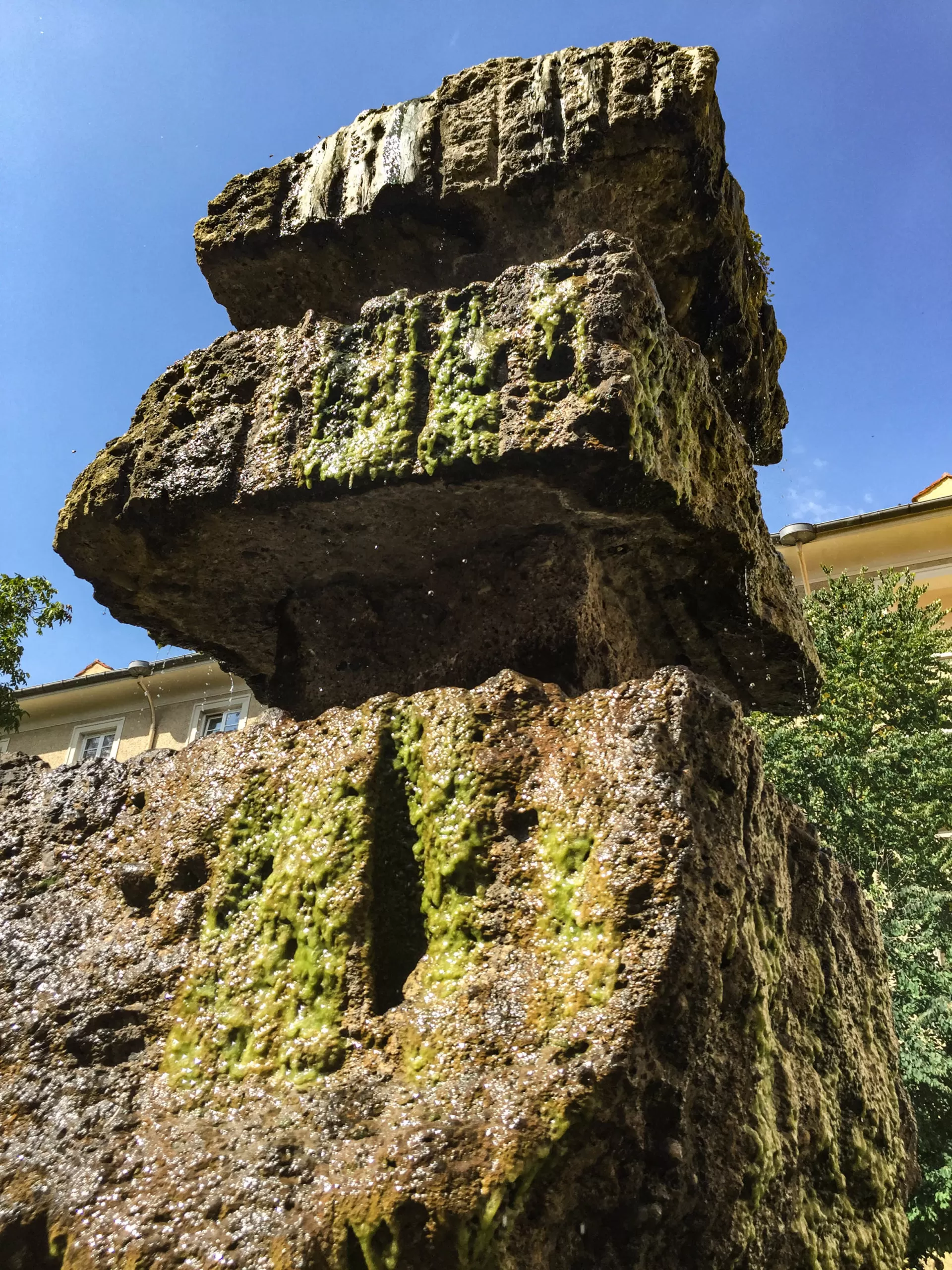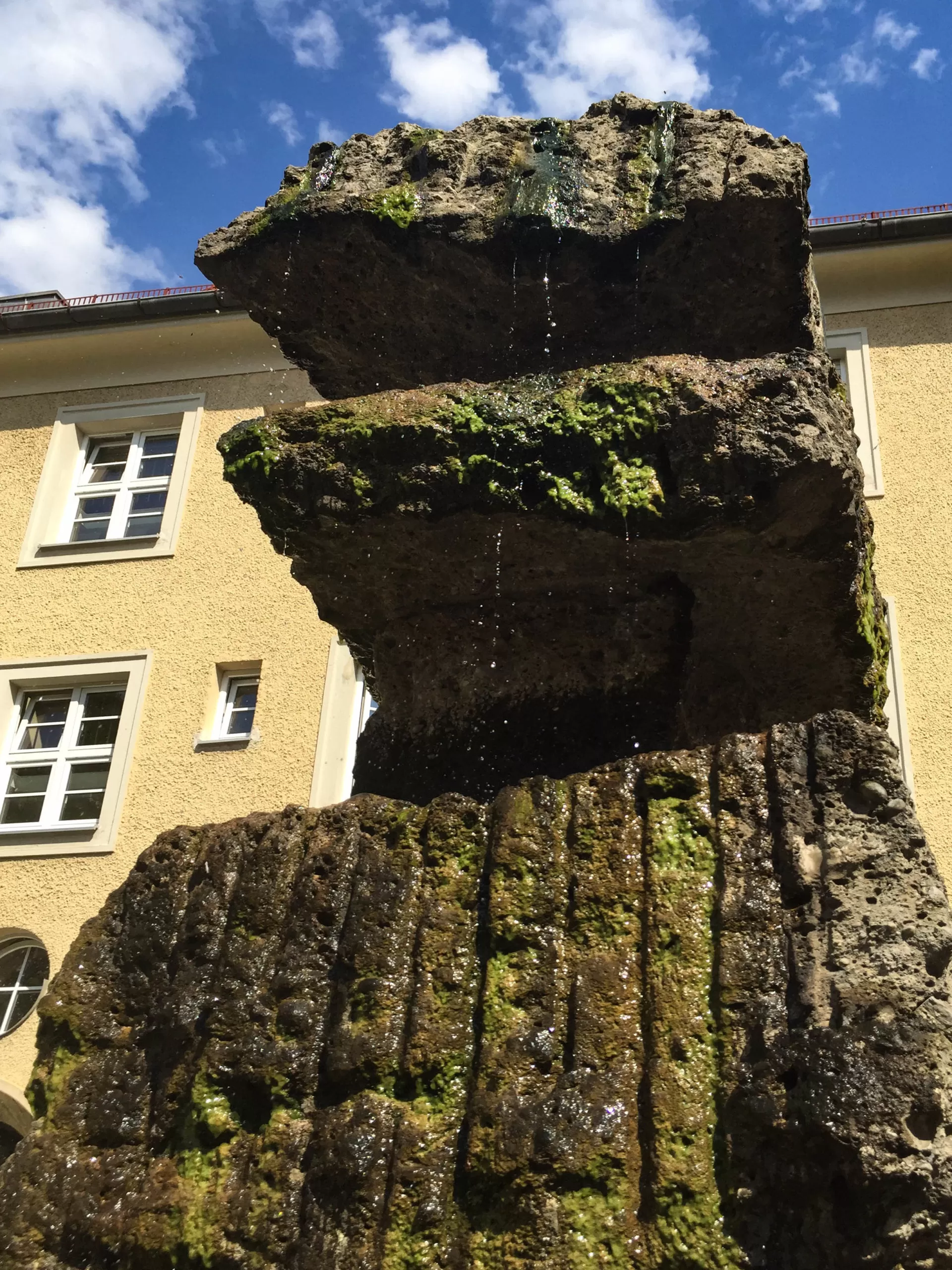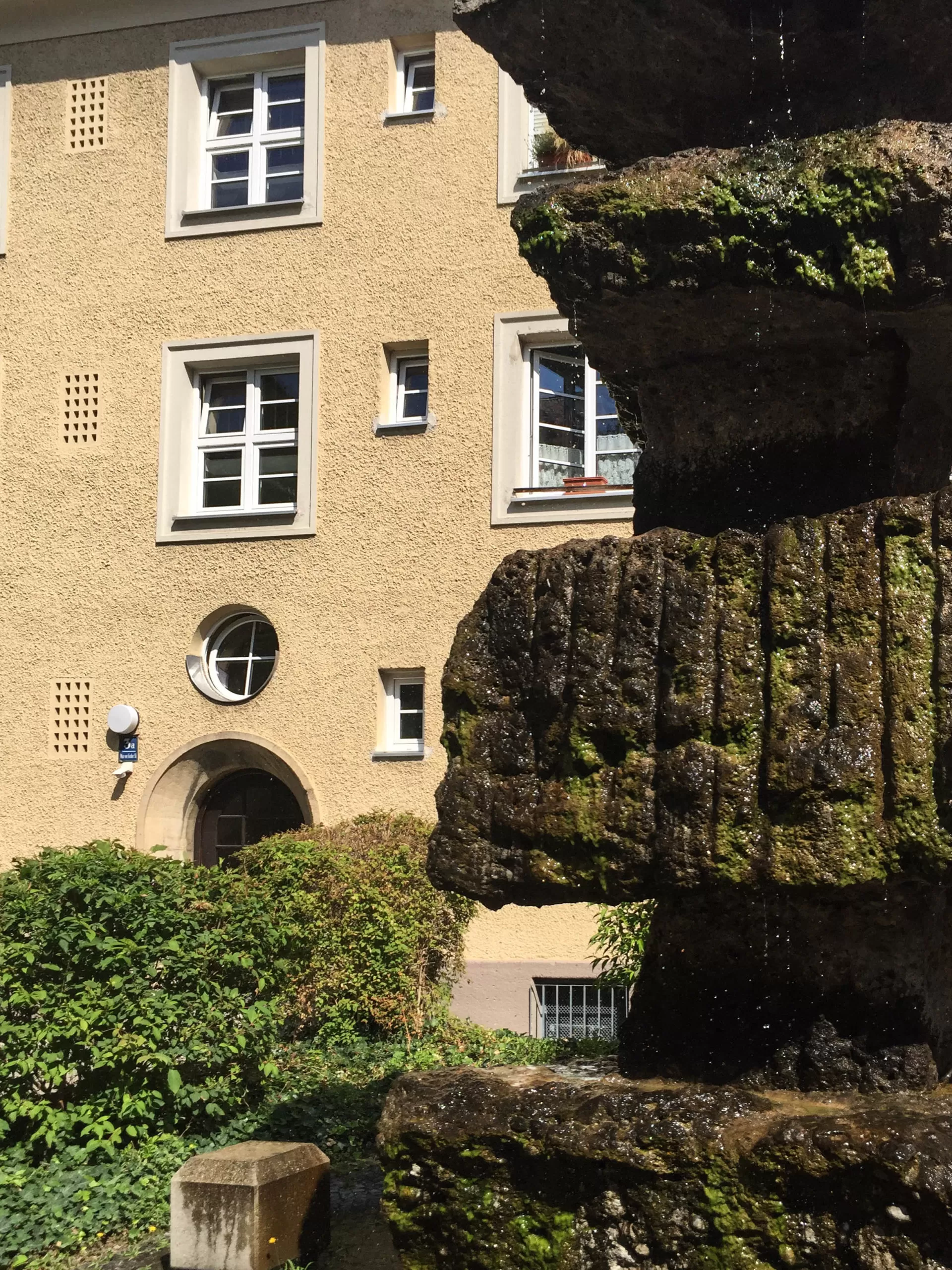1928
Sculptor: Karl Knappe
Max-von-Gruber-Straße 3, Munich, Germany
Since 1928, the abstract work Steinerner Baum (Max-von-Gruber-Brunnen) of sculptor Karl Knappe has stood in Max-Gruber-Strasse in Munich-Schwabing.
Karl Knappe
Born in Kempten in the Allgäu in 1884, Knappe attended a grammar school in Bamberg until 1903. From 1904 to 1909 he studied at the School of Applied Arts and the Academy of Art in Munich.
From 1909 to 1911 he worked as a sculptor in Dresden and Berlin. In 1911 he received the Rome Prize.
Between 1922 and 1928 he worked together with Thomas Wechs on the war memorial for the fallen of the First World War of the city of Munich, which is now located in the Hofgarten.
In 1926 he was appointed professor by the State of Bavaria.
He received a lectureship in sculpture from the Technical University of Munich in 1930.
His sculptural activity was outlawed by the Nazi regime in 1933 with a professional ban.
Hagar
The lost sculpture Hagar by Karl Knappe from 1923 was found together with ten other sculptures by other artists in 2010 during civil engineering work for a new subway line at the Berlin Sculpture Find in front of the Red City Hall in Berlin.
It had been part of the confiscation action in the context of the exhibition Entartete Kunst (Degenerate Art) of the National Socialists.
Shortly thereafter, the finds were presented to the public in the Greek Courtyard of the Neues Museum on Berlin’s Museum Island.
In May 2013, a cast of Hagar was placed in the Christophorus Church in Berlin-Siemensstadt.
Max-von-Gruber-Brunnen
The Steinerne Baum (Stone Tree) or Max-von-Gruber-Brunnen, a fountain sculpture, six meters high and made of Brannenburg Nagelfluh, is intended to commemorate the achievements of Max von Gruber, a senior medical councilor and professor of hygiene and bacteriology at the Ludwig Maximilian University in Munich.
The sculpture was financed and commissioned by the Verein für Verbesserung der Wohnungsverhältnisse in München e.V. (Association for the Improvement of Housing Conditions in Munich).
Since the mid-1920s, the reliefs for the war memorial in the Hofgarten as well as the brick cuts on the facade of the Ledigenheim had been created in Munich according to designs by Karl Knappe.
In 1930 Knappe was appointed professor of sculpture at the Technical University in Munich.
In 1933, despite strong protests from his students, he was removed from office on charges of so-called cultural Bolshevism.
The fountain sculpture was also to be removed, but since the city did not own it, the proceedings remained fruitless.
Der Steinerne Baum
The Stone Tree stands in a square water basin in a courtyard surrounded by residential buildings.
A square, raw Nagelfluh cube supports a Nagelfluh trunk, on which plates of different sizes symbolize the branches of the tree.
In a monograph on Karl Knappe published in 1929, author Otto Fischer emphasizes the work’s affiliation with Cubism.
The water trickling over the sculpture and the resulting slowly developing vegetation on the stones meant for Knappe an expansion of the concept of sculpture in the direction of a temporal dimension.

